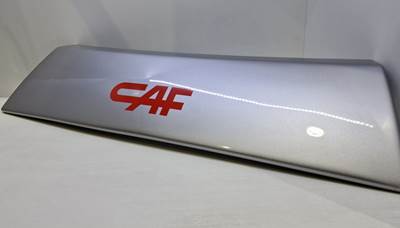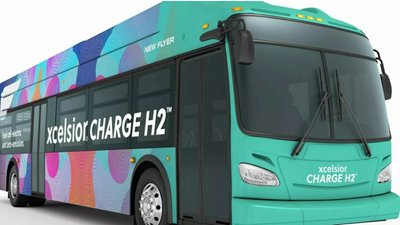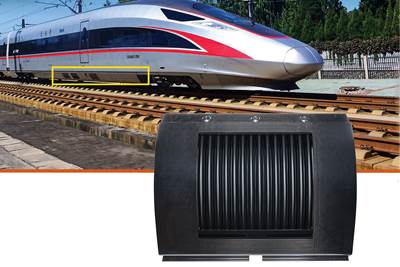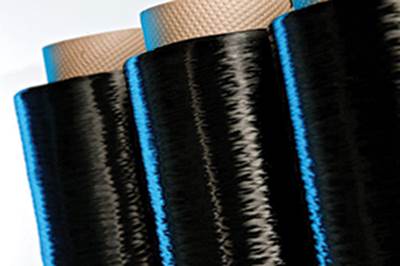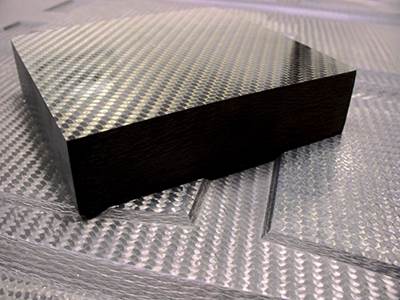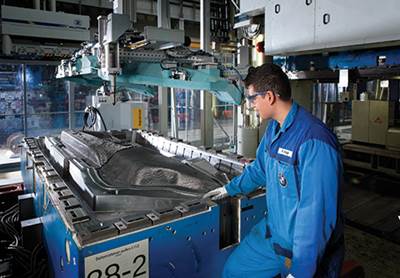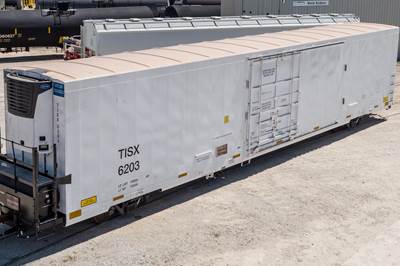Composites Use in Mass Transit
Led by needs to reduce emissions and increase efficiency, there are a variety of opportunities and efforts toward incorporating lightweight composites into more mass transit vehicles like railcars and buses, from vehicle bodies and frames, to doors, tracks, bogies and battery enclosures.

Latest Mass Transit Articles
VIEW ALLAward-winning Oder river bridge cuts 500 tons of steel with CFRP tension cables
Developed by Carbo-Link and tested by Empa, the Oder Bridge near Küstrin is a heavy rail bridge using 88 CFRP tension members, enabling 120 km/hr train speeds with reduced weight and emissions.
Read MoreWave of Hexagon Agility orders progress North American CNG truck market
Natural gas (CNG/RNG) fuel systems provider adds $4.2 million for fuel systems installations to delivery lineup.
Read MoreTRB Lightweight Structures acquisition strengthens Kineco Group's global rail business
Kineco builds up its rail-focused brand in India, and better positions TRB to improve efficiencies and enter new geographies.
Read MoreSBB brings CompPair regenerative composites to ICN train fleet
HealTech will be integrated into the fleet’s refit program starting with cowcatcher components, a move that will eliminate costly replacements, maintenance and build the durability of rail parts under constant impact.
Read MoreHexagon Digital Wave provides requalification services for oilfield service company’s gas transportation fleet
Noninvasive modal acoustic emission (MAE) technology will support composite cylinder inspection for the U.S. company’s virtual pipeline trailers through 2027.
Read MoreTransRail Connection announces ninth edition dedicated to rail, urban mobility
The two-day October 2025 event in France provides a crossroads for companies, startups, labs and research centers to exchange ideas and innovations modernizing rail and urban mobility ecosystems.
Read MoreKnowledge Centers

┬╠├▒¤ÎĂŮ’s CW Tech Days: Infrastructure event offers a series of expert presentations on composite materials, processes and applications that should and will be considered for use in the infrastructure and construction markets.
LEARN MORE
During CW Tech Days: Thermoplastics for Large Structures, experts explored the materials and processing technologies that are enabling the transition to large-part manufacturing.
LEARN MORELatest Mass Transit News And Updates
Composite Braiding awarded for TPC twin track cantilever support
Railway infrastructure cuts weight by 84%, carbon emissions by 80% and installation time by 50% while automated process offers ≥90% lower labor costs, waste and energy use versus traditional composites manufacturing.
Read MoreNew Flyer selects Hexagon Purus H2 tanks for fifth consecutive year
Type 4 tanks will continue to be supplied for the mass mobility provider’s Xcelsior Charge FC fuel cell electric transit buses.
Read MoreBüfa partners with Končar to develop composite electric rail platform
Kon─Źar-Elektri─Źna to use Büfa fire-retardant composite materials for electric vehicle development.
Read MoreSABIC debuts EN45545 rail-compliant, fiber-reinforced compound
LNP Thermocomp AM DC0041XA51 offers the rail industry a solution that can be used for on-demand printing of large, complex exterior and interior parts in relatively small build numbers.
Read MoreLongtime partner New Flyer selects Hexagon Purus to outfit hydrogen transit bus
Hexagon Purus will continue to supply Type IV hydrogen tanks for the Xcelsior Charge H2 fuel cell electric bus, the tanks of which will be produced out of Hexagon’s new Maryland facility.
Read MoreLIST opens innovation center focusing on sustainable composite materials
The Sustainable Composite Materials and Manufacturing Innovation Centre (SCMM) will be supported by major players in rail, aerospace, automotive and space to transition sustainable composites research to commercialization.
Read MoreFeatured Posts
Composites reinvent transportation
Celebrating National Composites Week, CW shares ways in which composites continue to evolve mass transit.
Read MoreComposite sidewall cover expands options for fire-safe rail components
R&D project by CG Rail explores use of carbon fiber-reinforced thermoplastics and recycled manufacturing scrap to meet fire safety, weight and volume targets.
Read MoreMaterials & Processes: Fibers for composites
The structural properties of composite materials are derived primarily from the fiber reinforcement. Fiber types, their manufacture, their uses and the end-market applications in which they find most use are described.
Read MoreMaterials & Processes: Resin matrices for composites
The matrix binds the fiber reinforcement, gives the composite component its shape and determines its surface quality. A composite matrix may be a polymer, ceramic, metal or carbon. Here’s a guide to selection.
Read MoreMaterials & Processes: Fabrication methods
There are numerous methods for fabricating composite components. Selection of a method for a particular part, therefore, will depend on the materials, the part design and end-use or application. Here's a guide to selection.
Read MoreRefrigerated railcar floor expands composites horizons
TrinityRail, in an effort to update a 20-year-old design, seizes the opportunity to apply composites in a structural application in its refrigerated railcar. It’s a first for the rail and composites industry.
Read MoreFAQ: Mass Transit
How are composites used in buses?
Opportunities for composites have arisen as more all-electric buses have been designed and developed.
Like consumer vehicles, battery enclosures for battery-electric buses are likely to use composites for their light weight, design flexibility and tailorability to meet a range of property requirements.
Several all-composite or partially composite all-electric bus designs have also been developed.
Source: EV battery enclosure inspires material, process innovations
Are composites used in hyperloop designs?
- Some! Several designs have included carbon fiber composite components in the pods and/or tracks for various prototype and competition models over the past several years.
- Source: Into the Hyperloop










